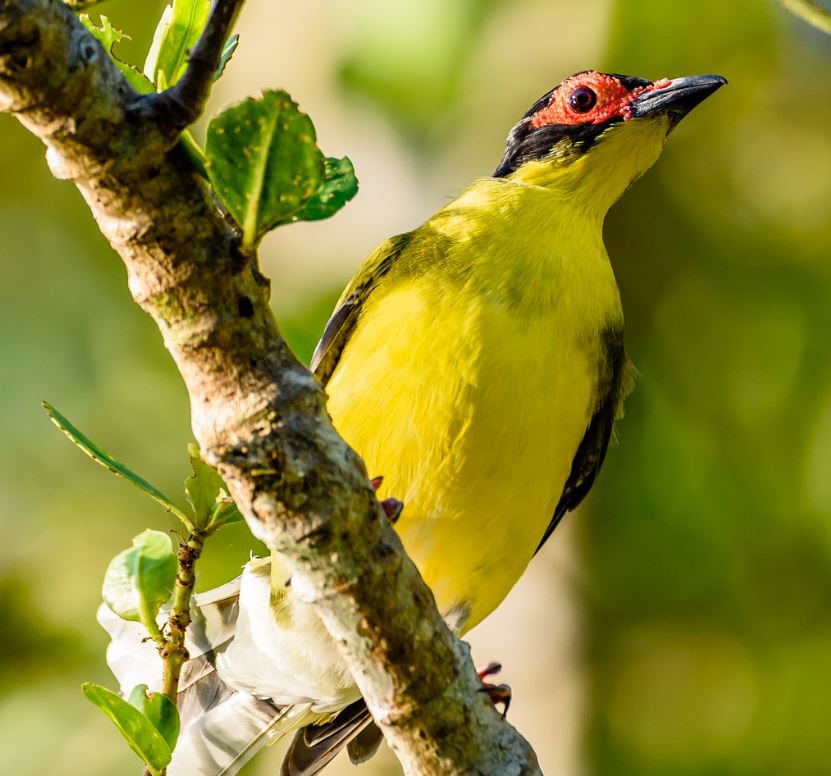Australasian Figbird

creative commons
Olive-green body with a black crown and bare red skin around eyes.
Identification
The male has bare, red skin around the eye, a black crown and a grey neck and throat. Its body is olive-green, except for a white under-tail area. The female has grey skin around the eye and lacks distinctive head markings. It is brown-green above and dull-white below, streaked with brown. Both sexes have a blackish bill. Males in the north have a yellow front, in contrast to the completely olive-green birds in the south.
Habitat
Rainforests and wet sclerophyll forests; also urban parks and gardens, particularly those with figs and other fruit-producing trees.
Distribution
Northern and eastern Australia.
Feeding and diet
Commonly encountered in city parks that contain fig trees, and will often visit orchards and gardens that have leafy trees and berry-producing plants. It feeds in flocks and will eat most soft fruits and berries; insects are also an important part of their diet.
Breeding behaviours
It nests in small, semi-colonial groups, with nests often quite close together. The nest is cup-shaped and built of vine tendrils and twigs. It is supported by its rim from the horizontal fork of an outer branch of the canopy, up to 20 m above the ground. Both males and females incubate the eggs and feed the young. Its call is a loud, descending 'chiew'.


